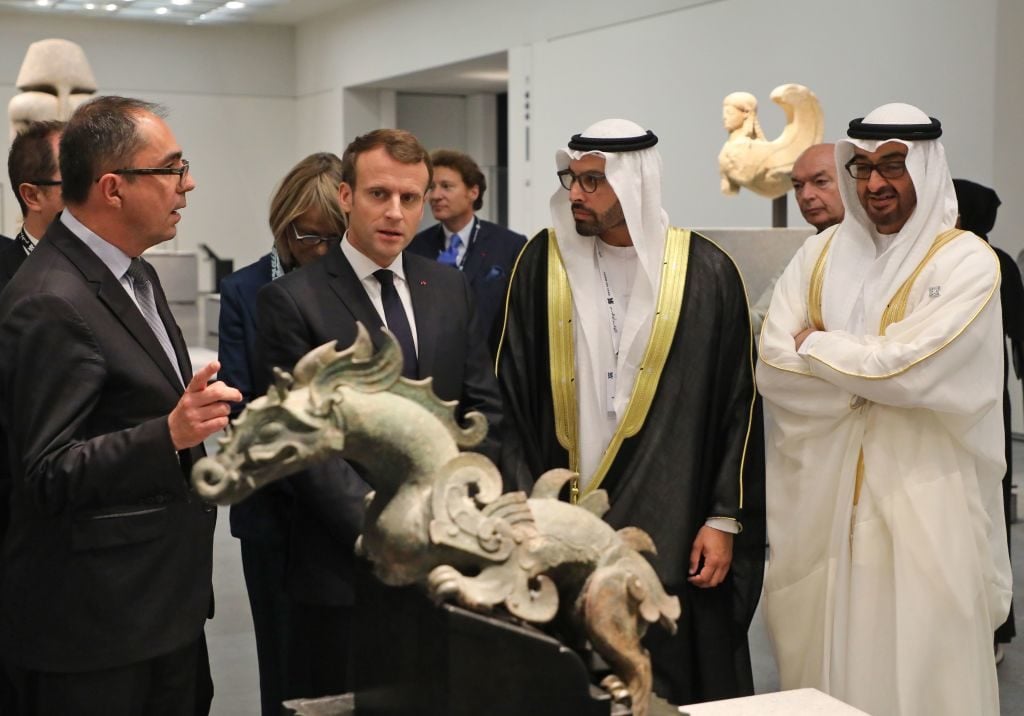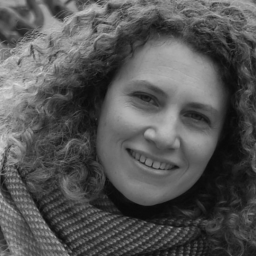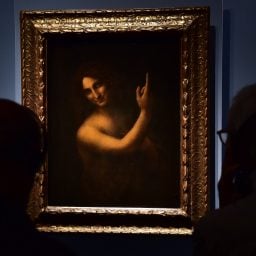How did the Louvre Abu Dhabi come to find itself embroiled in one of the biggest art trafficking scandals in recent history? Did it ignore suspicious provenance patterns and fake documents when it bought major Egyptian antiquities worth millions, now believed to have been stolen?
The findings of an ongoing investigation, some of which were reported yesterday in the French daily Liberation, shed some new light on the situation.
France’s Central Office for the Fight against illegal Trafficking in Cultural Goods (OCBC) is conducting an ongoing investigation into illicit artworks purchased by the Louvre Abu Dhabi and the Metropolitan Museum of Art, in cooperation with the Manhattan District Attorney’s office.
Their conclusions detail how individuals at the private Agence France-Muséums (AFM), under pressure to fill the halls of the new Louvre Abu Dhabi, repeatedly dismissed warning signs, and failed to follow through with the verification of artifacts. The AFM, whose largest public shareholder is the Louvre Museum, was responsible for selecting objects on the market and authenticating their legal origin before suggesting the Louvre Abu Dhabi purchase them in the years leading up to its opening.
However, following a search of the premises in 2020, French investigators said the AFM showed signs of “real professional negligence,” “transgression of deontological rules,” and “failures,” according to Liberation.
Internal agency emails revealed that the AFM “without contest permitted a criminal network to dispose of these Egyptian antiquities of an exceptional market and patrimonial value,” wrote the OCBC. The sale of smuggled archaeological objects is also a known source of revenue for terrorist groups in the region, Liberation points out, citing additional information from a new report from the Clooney Foundation for Justice.
The AFM told Artnet News that it could not comment because it “has petitioned to join the current investigation as a civil party and is awaiting a response.”
Also implicated in the scandal is former Louvre director Jean-Luc Martinez, who served as president of AFM’s scientific committee, which authenticates the origin of art objects, from 2013 to 2021. In May, he was indicted for “complicity of gang fraud and laundering,” accusations he has denied.
Startling examples from the OCBC report include the AFM’s incomplete analysis of questionable contents found in a funeral set for the Egyptian princess Henuttawy, currently in the Louvre Abu Dhabi collection. A member of the AFM’s archaeology department at the time, Adrien Berthelot, expressed “ethical” concerns about possible human remains he heard rattling inside the nested sarcophagi when they were moved, and said further analysis was needed.
However, the AFM went ahead and, in 2014, fostered the sale of the Henuttawy set for €4.5 million ($4.8 million) to the Louvre Abu Dhabi, according to Liberation. Later, an expert told the OCBC that the contents of the sarcophagi had indeed been conserved in an “indecent” and “abnormal” manner, and suggested there were human remains.
For the same Henuttawy set, the agency also complied with the sudden wishes of its dealers, Christophe Kunicki and husband Richard Semper, to delay publication of new research revealing it came from an area in Egypt heavily pillaged during the 2010s. That research, by Egyptologist Raphaële Meffre, was never published. The OCBC investigation has since said fake documents were used to certify the set’s export from Egypt to Germany, and that it was smuggled out of Egypt in 2013.
In June 2020, Kunicki and Semper were arrested for trafficking hundreds of artifacts from the Near and Middle East and are currently under house arrest. They are accused of knowingly purchasing illicit objects from Roben Dib, a German-Lebanese dealer arrested in March on the same charges, and now detained in France. All three have maintained their innocence.
Another object appears to have earned the AFM’s approval despite concerns: a rose granite stele depicting pharaoh Tutankhamun, which Kunicki sold via Dib to the Louvre Abu Dhabi in 2016. The OCBC investigation found that, in 2001, the same stele was offered for sale to the Louvre in Paris. But the museum declined, after its Egyptian antiquities curator, Marc Etienne, noted that it came from an area of Egypt that was pillaged in the 1980s. He underlined this “damper” on an otherwise impressive monument.
Etienne’s warning was included in the AFM’s file on the stele, reported Liberation. More recently, the OCBC found seven fake certificates attributed to the provenance of the stele, identical to others sold by Kunicki and Dib.
Other individuals named in the report either wished not to comment or did not respond to Artnet News’ requests in time for publication.








